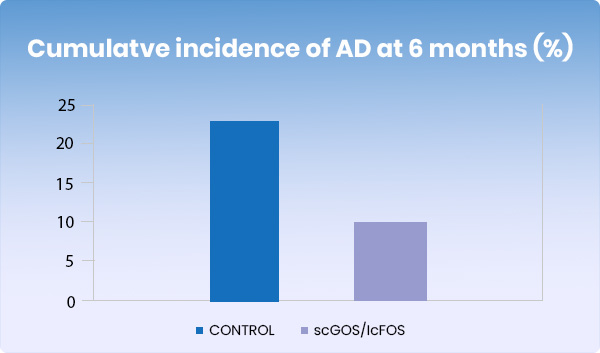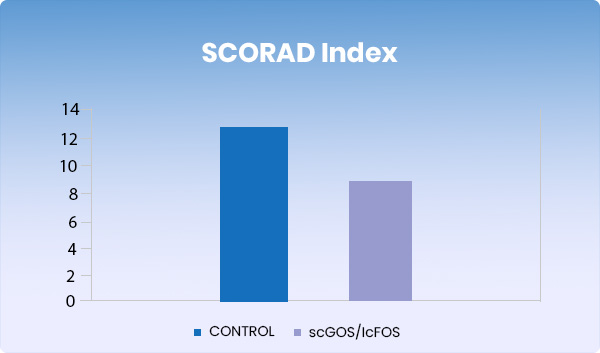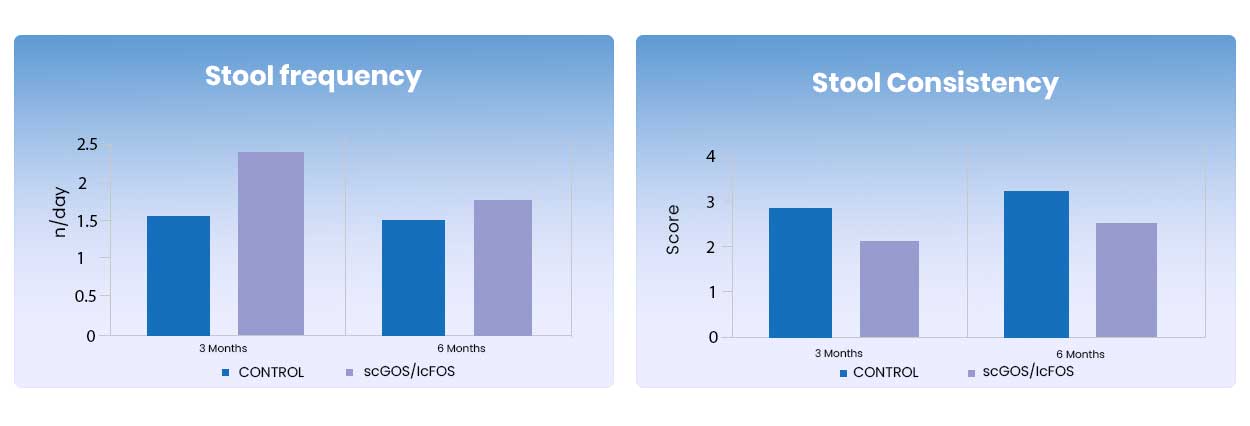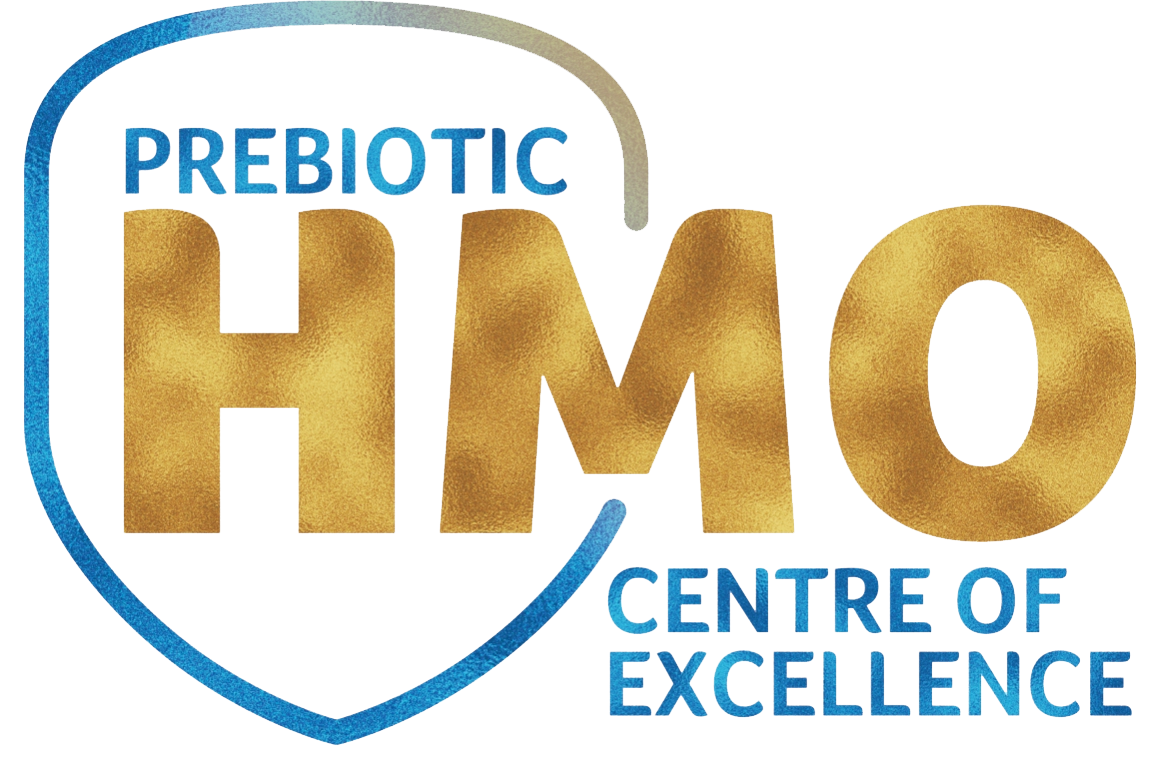Background
Atopic Dermatitis (AD) is a chronic inflammatory skin disease characterized by scaly, itchy skin causing redness and rashes.1 The first manifestation of an allergy is usually AD. The incidence AD has significantly increased in the last decade in developing countries.2 In India, the prevalence of AD in paediatric population ranges from 3.1% to 7.2%.3 It is associated with delay in maturation of immune responses in early infancy. Intestinal microflora plays an important role in development of immune system in infants. Evidence suggests that infants fed a prebiotic mixture of short chain galacto-oligosaccharides (scGOS) and long chain fructo-oligosaccharides (lcFOS) in the ratio 9:1 have similar intestinal flora to breast-fed infants.2
Aim
To evaluate the effect a prebiotic mixture scGOS: lcFOS (9:1) on incidence of AD during first six months of life in infants at high risk of atopy.
Study Design
A double-blind, randomised, placebo-controlled trial consisting of infants exclusively formula fed after six months of life and at risk for atopy. 259 infants were enrolled out of which 206 infants completed the trial.

Primary Outcome
- Incidence of AD
- Extent of AD – Determined by Scoring Atopic Dermatitis (SCORAD) index.
Secondary Outcomes
- Bifidobacteria count in stool
- Stool characteristics – Frequency and consistency
- Regurgitation and Crying
Results and Discussions
Primary Outcome
1. Incidence of AD – IscGOS/lcFOS group had less no. of infants who had incidence of AD compared to control (p=0.014).

2. Extent of AD – At 6 months of age infants fed with scGOS:lcFOS had lower SCORAD scores compared to infants in control group. But the outcome was not statistically significant (p=0.18).

Secondary Outcomes
1. Bifidobacteria count in stool – Bifidobacteria count increased in scGOS/lcFOS group compared to control group at 3 months and 6 moths (p <0.0001).

2. Stool characteristics – Infants in the scGOS/lcFOS group had improved stool frequency compared to control at 3 months (p<0.0001) and 6 months (p =0.0059). scGOS/lcFOS group had softer stools compared to control at 3 and 6 months (p<0.0001).

Consistency - score 1–5: 1 = watery, 2 = soft, 3 = seedy, 4 = formed, 5 = hard
3. Regurgitation and Crying – Better feed tolerance was observed in scGOS/lcFOS group than control group as there were lower episodes of regurgitation at 3 months (p=0.0192) and 6 months (p=0.0027). Crying in connection to feeding was higher in the control group at 3 and 6 months (p=0.0175, 0.0057) respectively
Conclusion
eHF supplemented with scGOS/lcFOS (9:1) is well tolerated in infants with atopy risk. scGOS/lcFOS helps modulate the immune development by increasing the beneficial bifidobacteria in the gut, thereby reducing the incidence of Atopic Dermatitis.
eHF : Extensively hydrolysed formula, AD : Atopic Dermatitis
Reference
- Winfred Frazier, and Namita Bhardwaj. Atopic Dermatitis: Diagnosis and Treatment. Am Fam Physician. 2020;101(10):590-598.
- G Moro, S Arslanoglu, et.al. A mixture of prebiotic oligosaccharides reduces the incidence of atopic dermatitis during the first six months of age. Archives of Disease in Childhood. 2006 Oct;91(10):814-9.
- Abhishek De, Sonali Karekar, and Charles Adhav. Current Burden of Atopic Dermatitis in India: A Systematic Literature Review. Indian J Dermatol. 2023 Jul-Aug; 68(4): 487.
For the use of healthcare professionals only. Not for distribution to general public.

